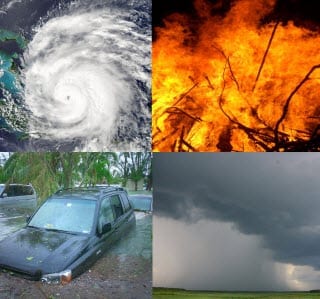Insurance news…
 AIR Worldwide (AIR) announced today that it has expanded its suite of Catastrophe Risk Engineering (CRE) solutions to help quantify, mitigate, and manage the risk associated with the impact of catastrophes on supply chain networks. AIR’s new offering will help risk managers better assess and reduce their risk from catastrophic perils such as hurricanes, earthquakes, floods, tornadoes, and tsunamis. This includes risk not only from physical damage but also from direct and contingent business interruption losses across the entire supply chain network.
AIR Worldwide (AIR) announced today that it has expanded its suite of Catastrophe Risk Engineering (CRE) solutions to help quantify, mitigate, and manage the risk associated with the impact of catastrophes on supply chain networks. AIR’s new offering will help risk managers better assess and reduce their risk from catastrophic perils such as hurricanes, earthquakes, floods, tornadoes, and tsunamis. This includes risk not only from physical damage but also from direct and contingent business interruption losses across the entire supply chain network.
“The catastrophe risk to supply chain networks came into focus following the volcanic eruption in Iceland in 2010. Just one year later, awareness of this risk was heightened further by the Tohoku earthquake and tsunami in Japan, as well as the major flooding in Thailand,” said Dr. Akshay Gupta, P.E., director of AIR’s Catastrophe Risk Engineering practice. “While the catastrophe risk to supply chain networks is quite complex, it can be effectively quantified. Once completed, the work involved to quantify this risk can also help expand risk assessment to other non-catastrophe perils.”
A supply chain is a collection of operational points, or nodes (as a simple example, a location with a single function such as a production facility, supplier, or distribution center), that are linked based on functional and revenue stream relationships. When all nodes in the network are identified and appropriately characterized, quantifying the physical damage potential associated with each individual node is a relatively straightforward exercise. However, the traditional approach to account for the resulting impact on a supply chain – and propagating the effect throughout the network – has considerable limitations.
“The existing method of assessing supply chain catastrophe risk is based on worst-case scenarios, establishing either 0% or 100% disruption one node at a time and propagating the impact through the entire the supply chain,” explained Dr. Gupta. “It does not include the likelihood or frequency of shutdown, nor does it consider the partial shutdown of a single node or the simultaneous disruption of multiple nodes. This traditional approach can now be improved to provide a realistic and comprehensive assessment of the supply chain’s catastrophe risk exposure.”
Dr. Gupta continued, “AIR’s CRE solutions combine a detailed network analysis with catastrophe risk models. As a result, partial damage and downtime states for all nodes can be simultaneously and explicitly considered. CRE solutions also account for the level of disruption at each location from multiple perils. By quantifying the impact of these disruptions on the overall supply chain network, CRE solutions provide a much more realistic and reliable view of downtime and loss.”
Understanding both the upstream and downstream components of the supply chain network enables companies to clearly identify network vulnerabilities, as well as the potential impact of catastrophes to their supply chain and, ultimately, to their business. Equipped with this insight, corporations can consider various physical, financial, or operational mitigation measures to undertake to improve supply chain resiliency; they can also incorporate such measures into the network analysis to quantify distinct benefits.
Risk managers and brokers use AIR’s CRE solutions for risk assessment, mitigation, and emergency response planning. They are also used to facilitate decisions regarding insurance coverage. By combining CRE capabilities with AIR’s state-of-the-art risk modeling, AIR is able to provide catastrophe risk solutions for commercial and industrial supply chain networks that span the globe.
About AIR Worldwide
AIR Worldwide (AIR) is the scientific leader and most respected provider of risk modeling sftware and consulting services. AIR founded the catastrophe modeling industry in 1987 and today models the risk from natural catastrophes and terrorism in more than 90 countries. More than 400 insurance, reinsurance, financial, corporate, and government clients rely on AIR software and services for catastrophe risk management, insurance-linked securities, detailed site-specific wind and seismic engineering analyses, and agricultural risk management. AIR is a member of the Verisk Insurance Solutions group at Verisk Analytics (Nasdaq:VRSK) and is headquartered in Boston with additional offices in North America, Europe, and Asia. For more information, please visit www.air-worldwide.com
